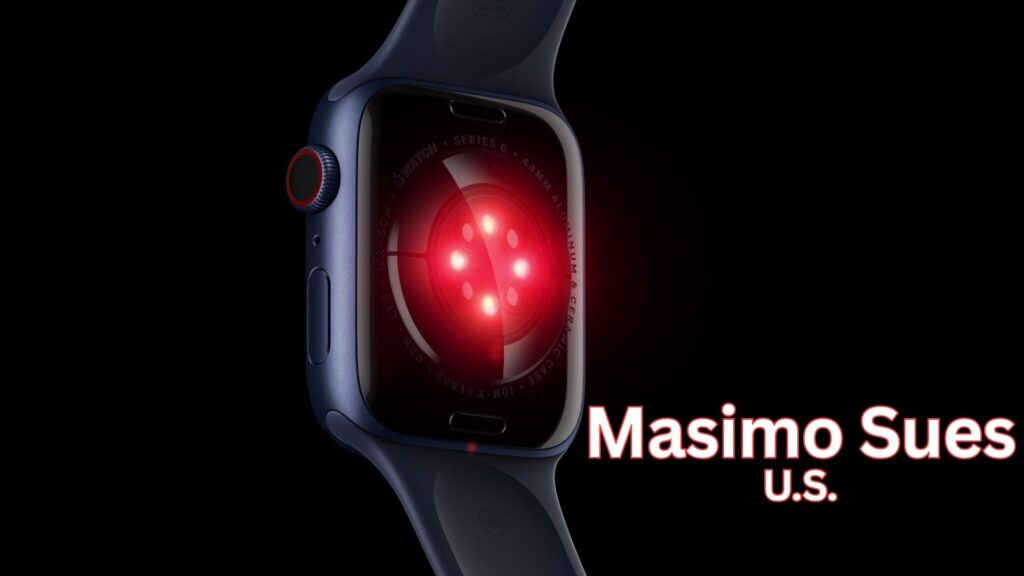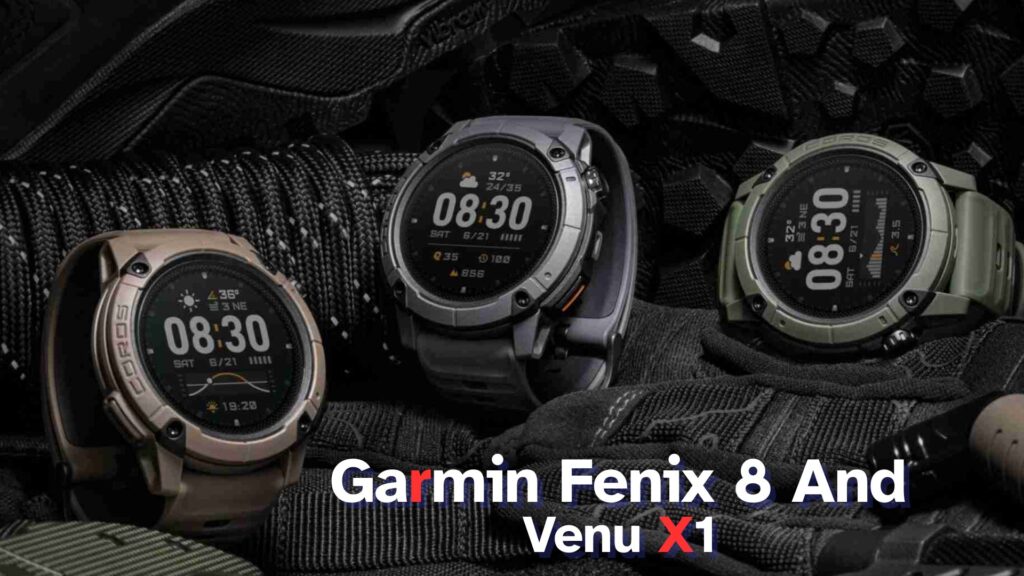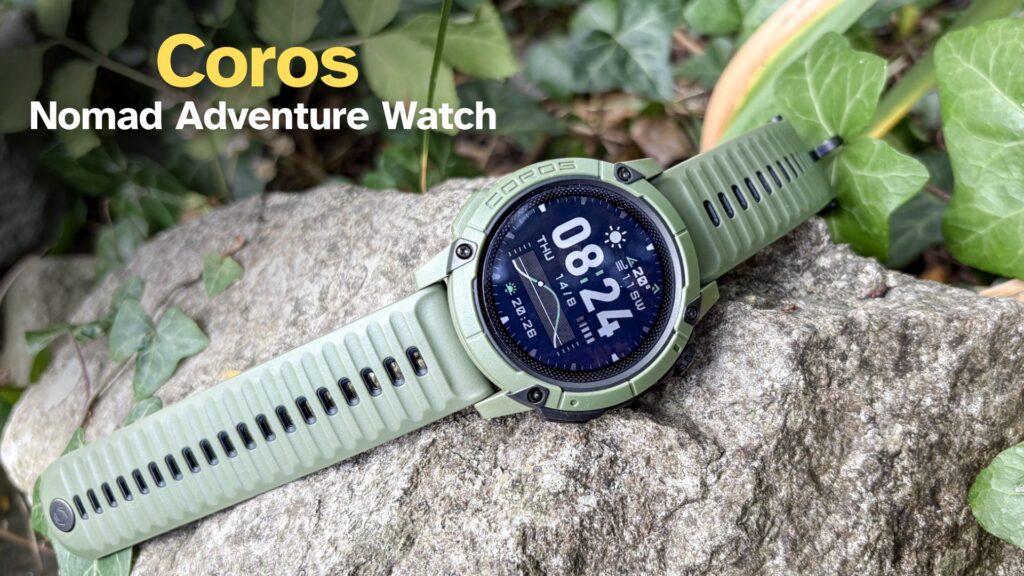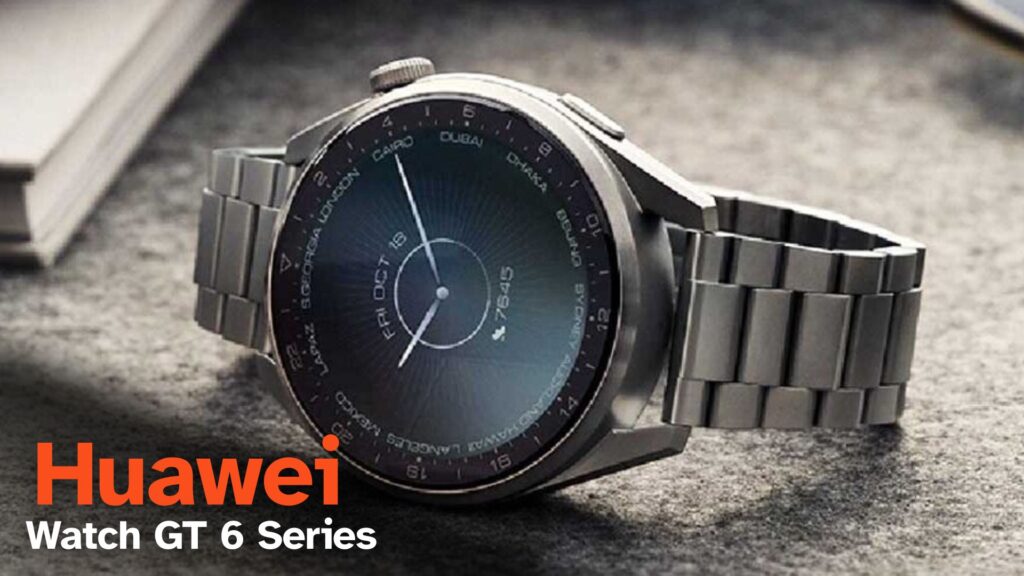HMD Global, the company best known for reviving Nokia phones, is steadily carving out an identity under its own brand. After the first HMD Vibe appeared last year as a budget-friendly device, the company is readying its successor the HMD Vibe 2.
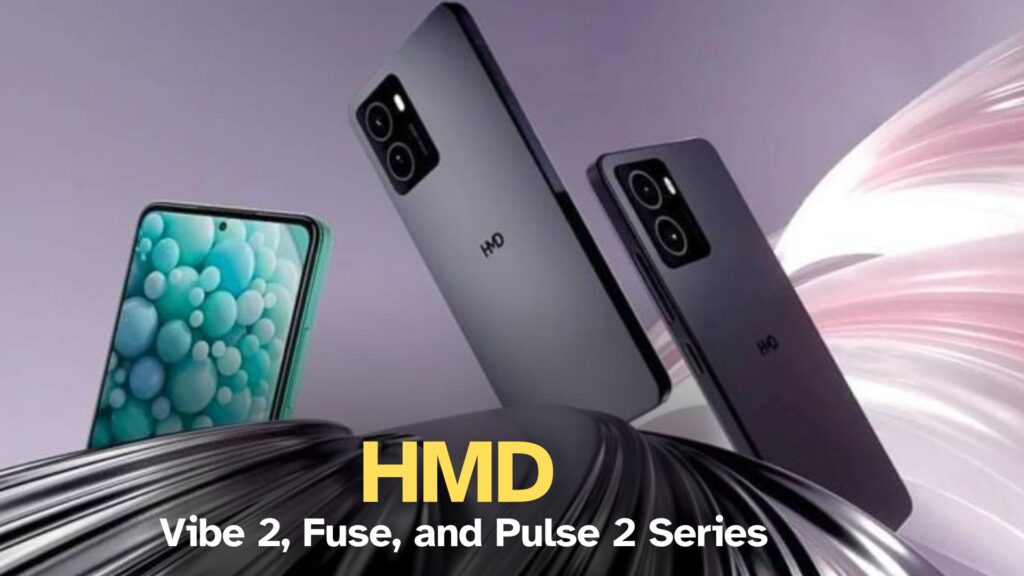
Alongside this, two more lineups have quietly surfaced through European Union listings: the HMD Fuse and HMD Pulse 2 series. These new entries suggest that HMD is accelerating its launch strategy while also adapting to stricter European sustainability rules.
The HMD Vibe 2: A Bigger Step Forward
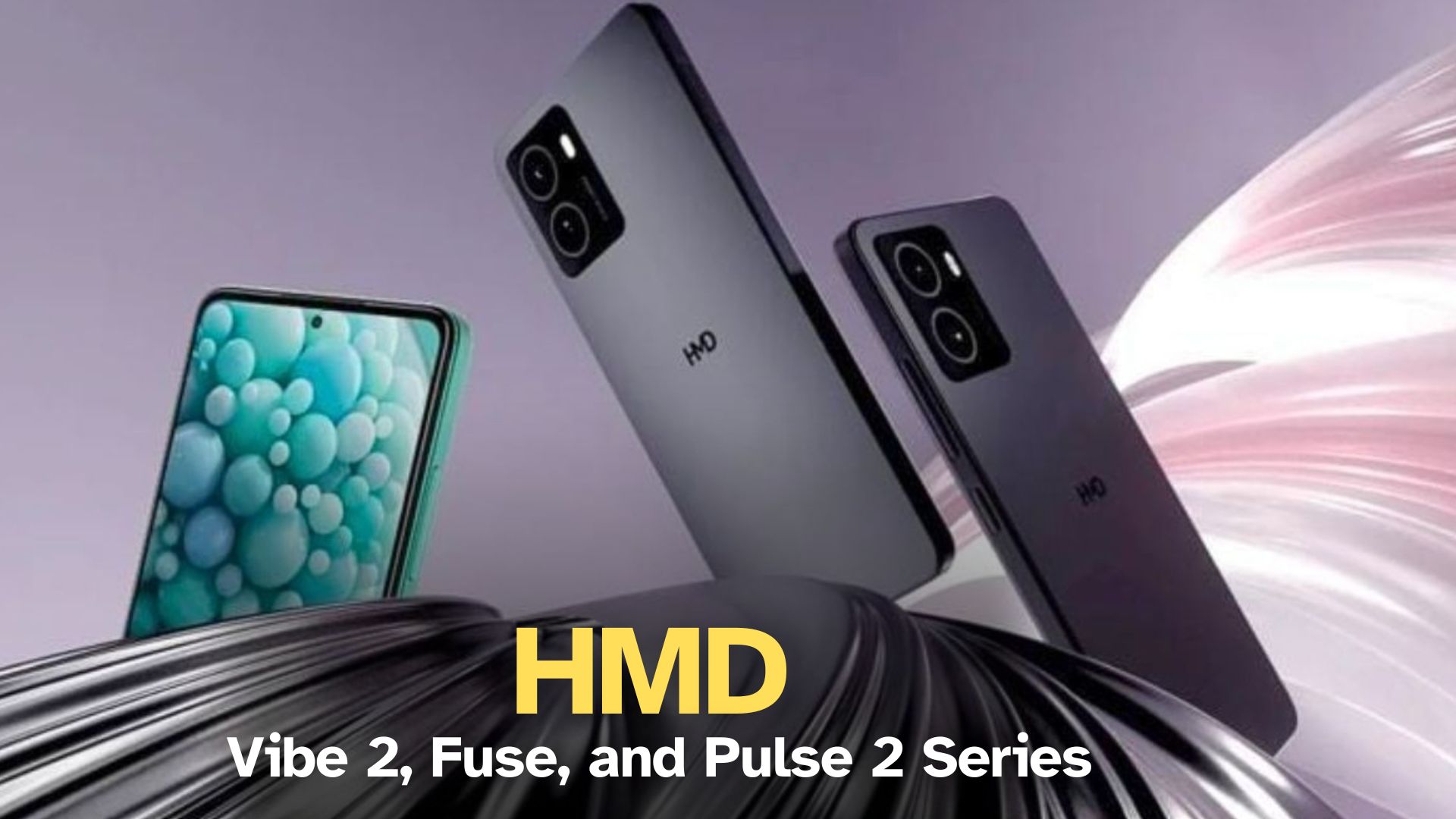
Display and Design
The Vibe 2 introduces a 6.67-inch Full HD+ OLED display. Compared to the original model’s basic LCD panel, this is a clear upgrade. It brings smoother visuals with a 90 Hz refresh rate, deeper contrast with HDR10 support, and more immersive viewing overall.
While the bezels remain relatively noticeable, HMD has refined the overall design to look more modern and competitive within the entry-midrange space.
Performance and Storage
Inside, the Vibe 2 runs on the Qualcomm Snapdragon 4 Gen 2 processor, paired with 8 GB of RAM. Storage is generous at 256 GB, with microSD expansion up to 512 GB. This makes the phone well-equipped for users who need extra space for photos, videos, and apps.
This chipset represents a significant leap over the Unisoc and Snapdragon 680 seen in HMD’s previous entry-level models, promising better efficiency and smoother multitasking.
Cameras: Major Improvements
One of the standout changes is in the camera department. The rear setup features a 50 MP primary sensor, complemented by a smaller 2 MP secondary sensor. Up front, HMD has surprised many by including a 50 MP selfie camera, an unusual offering in this price range.
This alone could position the Vibe 2 as an attractive option for social media users who prioritize high-quality selfies and video calls.
Battery and Charging
The phone is powered by a 5,000 mAh battery. Unlike its predecessor, which was limited to slow 10 W charging, the Vibe 2 now supports 33 W fast charging. This makes daily use more practical, allowing users to quickly top up their device.
The combination of a large battery, efficient chipset, and upgraded charging should provide excellent endurance.
Software
Out of the box, the Vibe 2 runs Android 15, giving it a software advantage over many competing budget phones that still ship with Android 14. This should extend the device’s longevity with updates and security patches.
Summary at a Glance
Model |
Key Highlights |
Official Site Link |
|---|---|---|
HMD Vibe 2 |
6.67-inch FHD+ OLED, 90 Hz + HDR10, Snapdragon 4 Gen 2, 8 GB RAM, 256 GB storage (expandable), 50 MP dual rear + 50 MP front camera, 5,000 mAh battery with 33 W fast charging, Android 15 |
|
HMD Fuse |
4,900 mAh battery, 33 W fast charging, IP54 splash resistance, EU A energy-class rating |
|
HMD Pulse 2 / Pulse 2 Pro |
4,900 mAh battery, 20 W charging, IP54 rating, EU A energy-class rating |
HMD Fuse and Pulse 2 Series: Practical Choices
Regulatory Listings Reveal Key Specs
Beyond the Vibe 2, the HMD Fuse and Pulse 2 series were spotted in the EU’s EPREL database. These filings highlight the company’s compliance with new EU energy labeling rules for smartphones, which aim to increase transparency about energy efficiency.
HMD Fuse
The Fuse (model TA-1640) includes a 4,900 mAh battery with 33 W charging support. It also carries an IP54 rating, providing protection against dust and splashes. Its placement in the “A” energy class rating makes it one of the first devices marketed under the updated EU system.
HMD Pulse 2 and Pulse 2 Pro
The Pulse 2 and its Pro variant (models TA-1687 and TA-1695) both share a 4,900 mAh battery with 20 W charging and the same IP54 rating. While they charge slower than the Fuse, they are still positioned as reliable, everyday smartphones.
By aligning its new phones with EU rules, HMD is signaling that sustainability and transparency will be core aspects of its strategy in Europe.
IFA 2025: The Likely Launch Stage
The IFA 2025 trade show in Berlin is just around the corner, and it is highly probable that HMD will showcase the Vibe 2, Fuse, and Pulse 2 series during the event.
IFA provides international visibility, making it an ideal venue for HMD to solidify its identity as more than just a steward of the Nokia brand. By presenting multiple phones at once, HMD can demonstrate its ability to compete across different price tiers.
Market Outlook
The key challenge for HMD will be standing out in a crowded budget and midrange smartphone market. While the upgrades on the Vibe 2 are impressive, success will depend on pricing and distribution.
The Fuse and Pulse 2 models, meanwhile, may find traction among consumers who value EU-certified energy efficiency, durability, and simple day-to-day reliability.
If HMD can combine competitive pricing with its sustainability focus, it could carve a stronger foothold in the European smartphone landscape.
Frequently Asked Questions (FAQs)
Q1. What makes the HMD Vibe 2 different from the first Vibe?
A. The Vibe 2 introduces a Full HD+ OLED display with 90 Hz refresh rate, a Snapdragon 4 Gen 2 processor, 8 GB RAM, 256 GB storage, 50 MP front and rear cameras, 5,000 mAh battery with 33 W fast charging, and Android 15 out of the box.
Q2. What are the standout features of the HMD Fuse?
A. The Fuse offers a 4,900 mAh battery, 33 W fast charging, IP54 protection, and an A-class EU energy rating.
Q3. How do the Pulse 2 and Pulse 2 Pro differ from the Fuse?
A. The Pulse 2 models have the same 4,900 mAh battery but charge slower at 20 W. They also include IP54 resistance and the same A-class rating.
Q4. When will these phones launch?
A. Although HMD has not confirmed, the devices are expected to debut officially at IFA 2025 in Berlin.
Q5. Why is the EU A-class rating important?
A. It demonstrates compliance with the latest EU energy labeling rules, highlighting energy efficiency and sustainability, which could appeal to environmentally conscious buyers.
For More Information Click HERE
